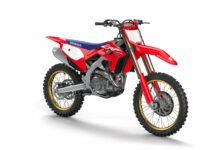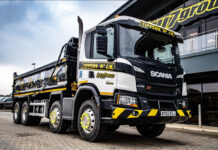At the top level of MXGP racing, much is often made of the contest between motorcycle brands or tyres or even the attention given to new gear and rider liveries.
Suspension companies have long been a vital part of the technological set-up in the FIM Motocross World Championship with names like Kayaba, Showa, Ohlins, Solva and WP all running their engineering ideas through forks and rear shocks.
It is WP that have caught attention over the past half a decade thanks to their powerful and successful association with KTM. However the Dutch/Austrian company – based a few hundred metres from KTM’s race workshop in Munderfing – have created a bigger buzz in MXGP thanks to the likes of CLS Monster Energy Kawasaki switching from Pro Circuit material to their products and Briton Shaun Simpson winning the last ever MX1 Grand Prix at Lierop last year with a WP-equipped private Yamaha.
Recently Wilvo Nestaan Husqvarna Racing’s Alex Tonkov has been running the innovative rear air shock on the FC250 in the MX2 class. WP Off-road Manager Wilfred van Mil shed some light on the work done by the small suspension crew in the Grand Prix paddock.
“We have three technicians and each one takes care of the priorities, which is KTM and Husky factory teams and Kawasaki CLS and then the support teams,” he explains. “With the factory teams we usually bring in the new stuff at the beginning of the year and once all the testing is done we normally keep it the same.”
Jacky Martens’ large MX2 team (with Tonkov and Romain Febvre as riders) were the first to start developing the prototype air shock in GP motos. Was this something they requested or WP were able to push?
“We suggest it,” van Mil reveals. “The air shock is a project that is already a couple of years in the making. We are coming to a stage where it is almost ready for GPs. At the moment Tonkov is using it in MX2 and it is at the development stage. In the U.S. Tedesco [Ivan] and Short [Andrew] have been riding it all year for supercross. The factory team [Red Bull KTM] are using springs at the moment.”
Tony Cairoli first tried the shock last year and Ryan Dungey even shipped whoops with it in one of the 2013 supercross meetings but it has yet to make more appearances in the premier classes. ‘We had some issues we had to solve,” admits the Dutchman. “We started testing at the end of last season and after two months, the riders went training and practicing, we found a couple of things we needed to work on.”
WP have been able to focus on and tweak the air system on the rear of the bike thanks to a satisfactory set-up with the front end for 2014. Van Mil: “There is not so much going on with the forks because we have been busy with the shock but the front suspension for this year was pretty good out of the box. Of course we had to get it set and make it reliable for GPs. Although from the beginning it was effective.”
Showa have already been running their air design in the front forks for two years – with the official Honda entry in MXGP – which is now almost an accepted practice, and one of the reasons why Jeremy Van Horebeek has been able to secure four from five podium finishes is thanks to the Yamaha Factory Racing team’s switch to works Kayaba equipment for 2014. It seems the battle is still on in terms of springs, valves and air compression.









